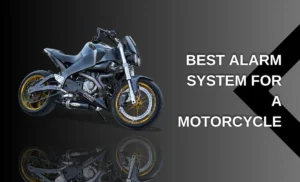Embracing the realm of sustainable transportation with the adoption of electric vehicles is a commendable step towards environmental preservation. While these vehicles bear a myriad of benefits, understanding the nexus of factors such as driving behavior, weather conditions, and the vehicle’s overall health which influence an electric vehicle’s range, is crucial. Furthermore, navigating the sphere of eco-friendly driving strategies and careful route planning not only contributes to substantial mileage extension but also enhances batteries’ durability. More so, the amalgamation of efficient battery care and maintenance dovetails with the maximization of advanced technological features embedded in these vehicles ensuring longer battery lifespan and improved range.
CONTENTS
Understanding the Basics of Electric Car Mileage
Understanding Electric Car Mileage and Range
Electric cars have a range, or distance they can travel, that is determined by the battery’s capacity, measured in kilowatt-hours (kWh). Greater capacity means a longer range, though real-world conditions have a significant influence. The advertised range given by the manufacturer is based on a tested average under ideal conditions and may not accurately represent everyday driving. Factors such as driving style, vehicle condition, and even the weather can all play a role.
Driving Behavior and Its Impact on Range
The way you drive your electric vehicle has a significant influence on its range. Accelerating quickly, constant high-speed driving, sudden braking, and frequent stops all reduce efficiency and drain the battery faster. Therefore, developing energy-efficient driving habits is vital.
Use regenerative braking, a feature commonly found in electric cars, which uses the energy generated during braking to charge the battery. Drive at a consistent, moderate speed and accelerate smoothly and gradually. Avoid high-speed driving as much as possible, as aerodynamic drag increases drastically at high speeds, requiring more energy to maintain speed.
Weather Conditions Affecting Range
Your electric car’s range can be significantly affected by weather conditions. Extreme cold or heat can reduce the battery’s efficiency. In freezing weather, a considerable amount of battery power can be used to heat the vehicle’s interior and keep the battery warm, reducing the available energy for propulsion. On the other hand, hot weather can cause the battery to overheat, causing the cooling system to use more energy to prevent damage, which also reduces range.
Precondition your car’s temperature while it’s still plugged in before you set off in extreme weather. This allows the heating or cooling systems to draw power from the grid rather than the car’s battery.
Maintaining Your Electric Car for Optimum Range
Regularly maintaining your electric car can considerably extend its range. Ensure your tires are correctly inflated as under or over-inflated tires can reduce your vehicle’s range by increasing rolling resistance. Keeping your vehicle’s battery clean and in good health is fundamental. Regular software updates are also important as manufacturers often release updates that can improve vehicle efficiency and battery management.
How Manufacturers Calculate Advertised Range
The advertised range of electric cars is typically obtained from regulatory tests using standardized procedures. In the U.S., this involves the Environmental Protection Agency (EPA) test cycle, which measures the range under city and highway driving conditions. However, these tests are often carried out under ideal conditions and may not represent real-world driving accurately. Always remember that the actual range will depend on several factors, including your driving habits, the car’s condition, and the weather.
To significantly extend your electric car’s range beyond what the manufacturer states, you need to cultivate energy-efficient driving habits and understand the various factors at play. This not only reduces energy consumption but also boosts range efficiency.

Strategic Driving and Route Planning
Mastering the Use of Regenerative Braking in Electric Cars
One key technology that can greatly extend your electric vehicle’s distance is regenerative braking. This feature stands apart from conventional braking systems that generally lose energy through heat due to friction. Regenerative braking, alternatively, recovers a large part of this energy. When an electric car slows down or travels downhill, its electric motors transition into generators. These generators convert kinetic energy back into electrical power, storing it in the battery for later use. Depending on driving conditions, this process of energy recovery can add a considerable number of miles to your electric car’s range.
Strategic Acceleration to Save Energy
Strategic acceleration is another effective way to improve electric car efficiency. Quick acceleration leads to a significant spike in power demand, forcing the battery to work harder and deplete faster. Slow and steady acceleration can reduce the drain on your battery, thus maximizing the driving range.
Implementing Eco Driving Modes
Most electric cars come with an eco-driving mode, which, when activated, automatically optimizes vehicle settings for maximum efficiency. The eco mode often softens the throttle response and limits the maximum speed. While these measures imply less dynamic driving, they can help achieve a longer range—particularly useful when driving long distances or to squeeze out a few extra miles when the battery charge is low.
The Power of Route Planning
Careful route planning is crucial in extending your electric car’s range. By choosing routes that avoid steep climbs and areas of heavy traffic, you can minimize both the drain on your electric car’s battery and the need for energy recuperation. Furthermore, planning a route that includes charging stations can reduce range anxiety, as you can top up the battery along the way.
Using GPS and Smart Driving Assistants
Modern electric cars often come with built-in GPS and smart driving assistants. These technologies not only provide real-time navigation to your destination but can also optimize your route for efficiency. For example, these systems may suggest a flatter route or routes with less traffic congestion, improving your driving efficiency and extending your electric car’s range.
Benefiting from Auxiliary Systems
Auxiliary systems such as heating and air conditioning can have a significant drain on an electric car’s battery. Minimizing the use of these systems, or using them wisely, can extend your electric car’s driving range. Preconditioning your car while it’s still charging—warming it up in winter or cooling it down in summer—can help maintain the battery’s optimal temperature and use less energy once on the road.
Explore a Comprehensive Guide to Electric Car Conversion Kits on EngineeringMix.com: Link
Maintaining Your Electric Car for Optimal Efficiency
Regular maintenance of your electric car is critical for its longevity, security, and efficiency. Simple practices like ensuring the car’s tires are correctly inflated can make a substantial difference in your vehicle’s performance. Negligence in car maintenance can demand more energy for operation, thereby shortening its overall range. Hence, proper upkeep not only prolongs your car’s lifespan but also enhances the range of your electric car and reduces running expenses.

Proper Battery Care and Maintenance
Enhancing Your Electric Vehicle’s Range with Appropriate Battery Care
Your electric car’s battery is a major determinant of the distance you can cover on one charge. Therefore, managing its health is a key step toward maximizing your vehicle’s range. This section will guide you on how to maintain your battery efficiently, ensuring it delivers peak performance and adds to your electric car’s lifespan.
Charging Techniques
The way you charge your electric car battery can greatly affect its overall health. Most modern electric vehicles (EVs) use lithium-ion batteries. These batteries don’t need to be fully discharged before you recharge them. In fact, routinely charging to 100% can degrade the battery faster. Instead, it’s best to keep your battery level between 20% and 80%.
Establish a routine based on your daily mileage. For instance, if you only do short runs, you may only need to charge every other day. If possible, try to minimize the use of rapid chargers as these can put more strain on your battery.
Storage Considerations
Where and how you store your electric car can also impact the battery’s health and lifespan. Long-term storage can lead to a low battery state, which can degrade your battery. If you’re not going to use your EV for an extended period, store it with around 50% battery life.
Managing Temperature
The temperature of your EV’s battery can also affect its lifespan. Most EV batteries perform best at 20–25°C (68–77°F). When the battery gets too hot or too cold, it may reduce its performance and can even damage it over time.
Many electric cars have a thermal management system in place to help keep the battery at the optimal temperature. However, if your EV lacks this feature, try to park in the shade during hot weather and in a garage during cold weather. If your battery is warm from a drive or charge, let it cool down before you plug it in.
Long-Term Care
Long-term battery care is about taking consistent small actions to preserve the health of your battery. These actions involve avoiding unnecessary fast charging, maintaining a moderate battery level, and storing your EV under ideal conditions. Also, consider scheduling regular checks on your battery – a yearly checkup would be suitable for most users.
Boost the Range: A Comprehensive Technique
Boosting the range of your electric vehicle (EV) necessitates meticulous attention to the care and maintenance of the battery. Proper charging methods, appropriate storage conditions, temperature regulation, and consistent upkeep are crucial parameters. They play a vital role in augmenting the battery performance and longevity and thus increasing the operating range of your EV.

Photo by screenpost on Unsplash
Utilizing Technology and Advanced Features
Leveraging Technological Advancements and Features to Boost Your Electric Car Range
Another substantial strategy to amplify your EV’s range is by leveraging the in-built technology and advanced features. Most EVs today feature energy-saving options, digital updates, EV-specific applications, and various other mechanisms intended exclusively to maximize range efficiency.
Energy-saving features
Among the energy-saving features is the regenerative braking system. This system uses the kinetic energy generated during braking to recharge the battery, consequently extending its range. Most EVs allow drivers to adjust the level of regenerative braking, and maximizing it can significantly enhance the vehicle’s range.
Another prominent energy-saving feature is the Eco Mode, often available on most EVs. When activated, this function optimizes the vehicle’s performance by limiting power consumption. It adjusts the air-conditioning system and throttle response, among other functions, to improve energy efficiency and, thus, extend the range.
Software updates
Next, software updates can also play a crucial role in enhancing EV range. Manufacturers regularly release software updates aimed at improving the efficiency of various vehicle functions. It’s essential always to keep your vehicle’s software updated to benefit from these enhancements, which may lead to better range and performance.
EV Apps
There are several EV-specific apps that can assist in increased efficiency and therefore, extend the range. These include route-planning apps that recommend the most energy-efficient routes or locate the nearest charging station. Other apps provide tips on efficient driving habits, while some offer real-time statistics on your driving, energy usage, and battery status. By taking advantage of these apps, you can fine-tune your driving habits and vehicle settings to maximize range.
Use of In-car Energy Management Systems
In-car Energy Management System (EMS) is another tool to maximize your EV’s range. The EMS displays the car’s energy consumption in real-time, with a breakdown of how different systems like air conditioning, lighting, and entertainment systems are affecting overall efficiency. By keeping a close eye on the EMS, you can better understand where the most energy is being used and make adjustments to extend the range.
To sum it up, fully utilizing the available technology and advanced features in your electric car can play a significant role in extending its range. By understanding and optimizing these features, along with adapting more efficient driving habits, you can get the most out of your EV’s battery.

Preserving the planet hinges greatly on our daily choices, and adapting to electric vehicles is a tangible expression of this commitment. However, to truly maximize these environmentally-friendly machines, we must adhere to strategic driving, proper battery maintenance, and fully utilize technology for better efficiency. From understanding the various factors that influence range to employ the right driving strategies and maintaining optimal battery health, every action plays its role in ultimately extending the range of your electric vehicle. Likewise, leveraging modern tech features, including energy-saving innovations and EV applications, can significantly augment your travel distance. Engaging with these, we unlock the full potential of electric vehicles, contributing not just to personal convenience but to the larger frame of ecological sustainability.



